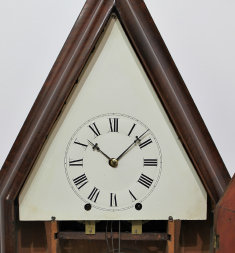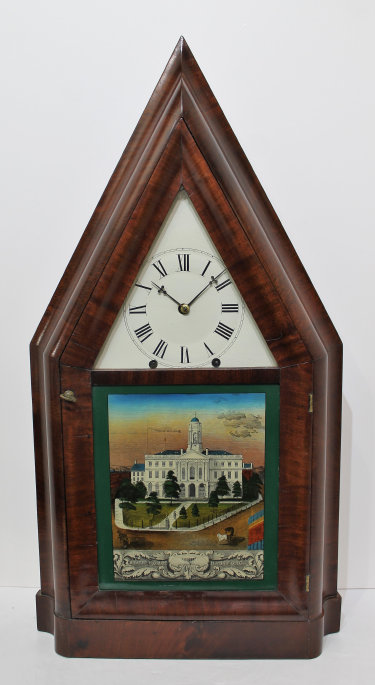
55. $5000
John Hunt oversize OG steeple, ca. 1850. An absolutely gorgeous 29-inch walnut-veneer case with a polished finish. Both glasses are period, the dial glass almost certainly original, the lower glass a likely replacement and repainted to show the State House at Hartford, CT, probably adapted from a lithograph by Edward Williams Clay in 1834 (see image). The backboard is beveled at the edges to blend into the side trim pieces. The dial has been repainted, the hands are proper replacements. The 8-day, time-and-strike movement is unsigned, running and striking on the wire gong; it was likely made by Wells, Hendrick & Co. in Bristol CT (Snowden Taylor, NAWCC Bulletin 270, page 16) and was found in another John Hunt oversize steeple much like this one (Dworetsky & Dickstein, Horology Americana, page 179). The movement was adapted from a weight-driven movement, so to hold springs in place, it appears that false count wheels were placed on the front of each winding drum (NAWCC Supplement No. 9, pages 58–59). The label is also adapted from a weight-driven movement, with instructions on how to attach and wind the weights. John Hunt was a case maker and cabinet maker in Plainville, CT, and did not make a lot of clocks, but the ones he made in his later years, like this one, are exceptional. This clock last sold at R.O. Schmitt in 2014 for $6500; there are only two examples of this model known. AAC sold a similar example last January that had a wagon-spring movement for $7500. $5000–$6500.
I posted this clock on Facebook and Joe Arvay noted that it looks like the seatboard has been lowered. I agree and am embarrassed that I missed that. Thus, the current movement may not be original. What kind of movement would have been there? That's a good question, as this movement is odd, being adapted from a weight-driven movement. There is no evidence that this case ever held a weight driven movement, despite the label alluding to one. Interestingly, this exact clock is shown the NAWCC Supplement 9 cited above, and no mention of a possible movement substitution was mentioned. It is possible that this is the way John Hunt built it.
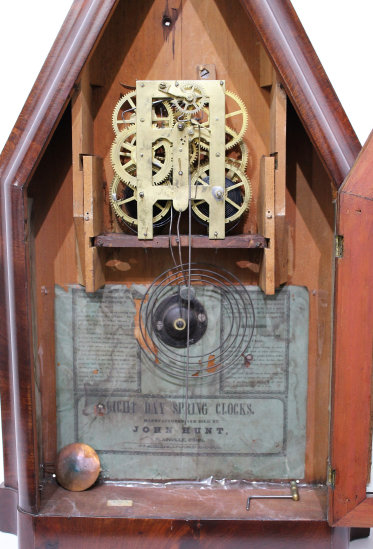
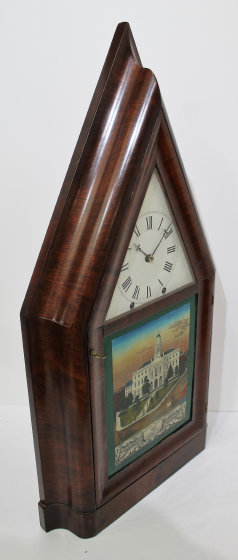
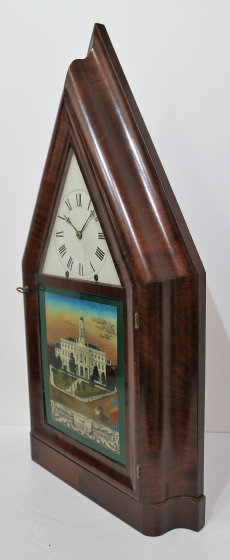

Antique American Clocks JANUARY 2024
